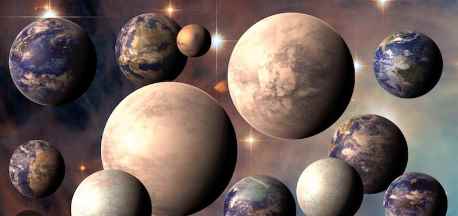21 planets have the best possibility of supporting that could Host Alien Life according to the Habitable Exoplanets Catalog as of April 2014. There are still many unknowns regarding the ecosystems of these planets, and not all of them have been proven. However, the catalogue offers astrobiologists a fantastic starting point when discussing life that exists in other solar systems.
The Gliese 667Cc
About 22 light-years away in the constellation Scorpius, Gliese 667Cc is another 'super-Earth' that is near to our planet. The planet's diameter is at least 4.5 times that of Earth, and it takes 28 days for it to complete one orbit of its parent star. The parent star, GJ 667C, is actually one of three stars in a triple-star system. A third of the mass of the sun's mass, the star is an M-class dwarf star.
Kepler-22b
Although larger than Earth, Kepler-22b orbits a star that is comparable to the sun in terms of size and warmth. Given that Kepler-22b is 2.4 times the size of Earth and that its greenhouse effect is comparable to Earth's, its surface temperature is predicted to be 72 degrees Fahrenheit (22 degrees Celsius.) Located in the constellation Cygnus, its star system is 600 light-years from the sun on Earth.
HD 40307g
HD 40307g, a 'super-Earth,' orbits peacefully within its parent star's habitable zone. In the constellation Pictor, it is located around 42 light-years from Earth. It is so close that distant telescopes might be able to look at its surface in the future. It is just over half the distance between the Earth and the sun, or 93 million miles, orbiting its parent star at a distance of roughly 56 million miles (90 million kilometres) (150 million kilometres.)
HD 85512 b
The discovery of HD 85512 b by the High Accuracy Radial Velocity Planet Searcher instrument, or HARPS, in Chile, was made public in 2011 along with the discovery of 50 other planets. About 3.6 times as large as Earth is this planet. It is located in the constellation Vela, around 35 light years from the sun (the Sail). The presence of water on its surface is something that researchers hope to determine someday.
Tau Ceti e
Only 11.9 light-years separate Earth from the planet candidate Tau Ceti e, which was discovered in December 2012. A 'super-Earth' at least 4.3 times as large as Earth is this world. Tau Ceti e could be a slightly hot planet suitable for rudimentary life, or it could be a world as hot as Venus, depending on its atmosphere.
In Gliese 163c
Gliese 163c's mass places it in a liminal space. Seven times as massive as Earth, the planet may be a dwarf gas giant or a very huge rocky planet. At a distance of 50 light-years from Earth, Gliese 163c revolves around its faint planet star every 26 days. The constellation Dorado contains its parent star.




Leave Comment
1 Comments